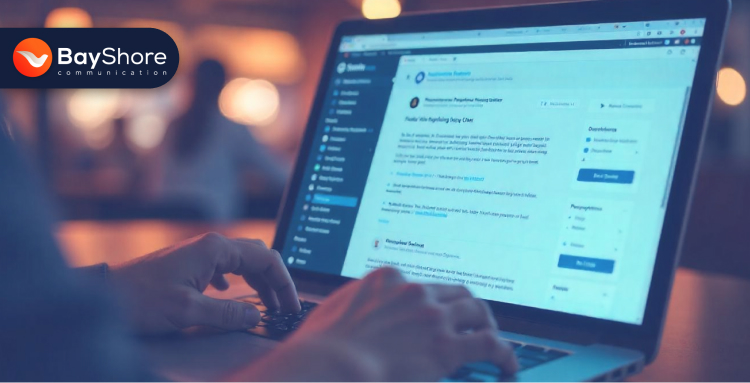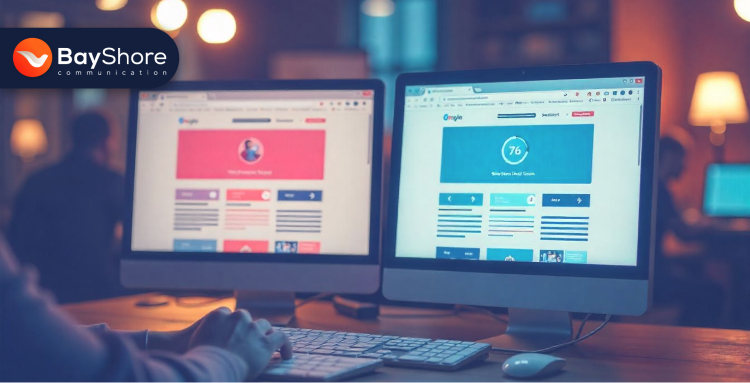
Ever notice how some brands stay in your mind while others disappear? A great logo or a catchy tagline might grab attention. However, the real goal is to lead people from that first spark of interest to actually doing something with it.
The same challenge exists on a larger scale. In Northern Mali, the World Bank found that development agencies provided government-funded services but branded them as their own. As a result, people didn’t trust the government because they didn’t realize it was behind the support they received.
Now, think about marketing. If people recognize your brand but never actually buy, sign up, or get in touch, then all that effort isn’t really paying off. In this guide, we’ll walk you through how to create a marketing funnel that turns awareness into conversions, step by step.
The first step in any marketing funnel is creating awareness. It’s about making sure your target audience knows who you are and what you offer. So, how do you make a memorable impression when you're competing for attention on crowded platforms?
Identifying Target Audiences
To create a brand that truly connects, start by understanding your audience beyond basic demographics. Technographic data plays a key role in analyzing the technology they use, their preferred devices, and the social platforms they engage with most. These insights allow you to refine your marketing, ensuring your message reaches the right people in the right way.
Building Brand Presence
Once you know your audience, the next step is visibility. Social media helps you get noticed and engage with a broad audience. From eye-catching posts to relevant conversations, it makes your presence felt instantly.
Content marketing positions you as an authority. Blogs, podcasts, and videos boost engagement while sharing valuable knowledge. Meanwhile, SEO ensures your website ranks when customers search for solutions you offer.
Emotional Engagement
To develop brand loyalty and long-term relationships, your brand's messaging should resonate on an emotional level. Think about the feelings you want to evoke in your audience. Craft messages that leave an unforgettable experience, and you'll create a community that is more than just customers.
More for you:

Once you’ve captured your audience’s attention, the next challenge is nurturing that interest. Now that potential customers know who you are, how do you keep them engaged?
Educational Content Creation
At this stage, your audience wants more than just a catchy motto or pretty picture. They want information that can solve their problems. Educational content is important to engage these individuals and establish trust. Think blogs, webinars, e-books, and infographics—anything that offers value and demonstrates your expertise.
Personalized Communication
Nowadays people are looking for personalized experiences that speak directly to their needs. That’s where email marketing comes in. With the help of automation, you can send customized content based on user behavior and preferences. This isn’t just about sending the same email to everyone; it's about creating segments based on interactions, interests, or past purchases. By doing so, you ensure that every piece of communication is relevant and adds value to your prospect’s journey.
Social Proof and Testimonials
When people see others have had positive experiences with your brand, they’re more likely to trust you. Social proof—through reviews, success stories, and testimonials—builds credibility.
Rather than just telling your audience how great you are, show them. Highlight real-life examples of how your product or service has made a difference. Testimonials, ratings, and case studies provide the confidence potential customers need to take the next step.
By now, your potential customers are engaged and interested. It’s time to push them closer to making a decision. This stage is about providing them with the information and experiences they need to feel confident in their choice.
Retargeting Strategies
Not everyone who interacts with your brand will immediately make a purchase. That’s where retargeting ads come in. If someone visits your website or engages with your content but doesn’t convert, you can retarget them with ads that bring them back to your site. These ads can remind them of your product, highlight features they might have missed, or offer incentives to finalize the decision.
In-Depth Case Studies
At this point, your audience is likely weighing their options. Case studies offer a deeper dive into how your product or service can help them. Detailed examples of how you've solved similar problems for other customers can help alleviate any lingering doubts. Case studies are a powerful tool for illustrating the tangible benefits of your offering, showing your prospects that they are making a smart choice by opting for your solution.
Free Trials and Demos
Sometimes, people need to see the product in action before committing. Offering free trials or demos lets potential customers test out your product or service with no strings attached. This hands-on experience can provide the reassurance they need to make an informed purchase decision.

Now, it’s time to close the deal. Your prospects are ready, but how do you ensure that they take the final step and make a purchase?
Optimizing Landing Pages
Your landing page is your sales pitch in digital form. Every element of the page should be designed with the customer’s journey in mind, from headlines to images to calls-to-action (CTAs). Make sure your CTAs are clear and direct, urging visitors to take the next step. A well-designed landing page can make all the difference between a completed purchase and a bounced session.
Simplified Checkout Processes
Cart abandonment is a major issue for e-commerce businesses. If your checkout process is too complicated, your customers may bail at the last minute. Simplify the process by cutting unnecessary steps, offering multiple payments, and clarifying shipping details to reduce friction. A smooth checkout experience can make the difference between someone walking away and someone completing their purchase.
Limited-Time Offers
Creating a sense of urgency can often be the push that prompts a customer to make a purchase. Limited-time offers or flash sales can drive immediate action. Whether it’s a percentage off, a bundle deal, or an exclusive bonus, time-sensitive promotions can create a fear of missing out (FOMO), which often drives conversions.
Acquiring new customers is important. However, retaining them is just as crucial. In fact, loyal customers are often your best brand advocates. Here's how you keep them coming back.
Post-Purchase Engagement
Your relationship with customers doesn’t end once the sale is complete. Post-purchase engagement is all about maintaining the connection and keeping customers happy.
Personalized follow-ups thanking them for their purchase, offering support, or providing exclusive deals can strengthen your relationship. Continuing to deliver value after the sale shows that you care about their experience and not just their money.
Community Building
Customers who feel like they belong are more likely to stick around. Community building can take many forms, from social media groups to loyalty programs or even offline events. Creating a space for your customers to connect with each other and with your brand enhances a sense of loyalty and belonging. It turns a transactional relationship into a community-driven one.
Loyalty Programs
Rewarding repeat customers with exclusive discounts, early access to new products, or special perks is a great way to ensure they stay loyal to your brand. Loyalty programs not only increase the lifetime value of a customer but also encourage them to spread the word about your brand.

Use data-driven decision-making and A/B testing to fine-tune each stage. Monitoring funnel performance with analytics tools can reveal where customers are dropping off and help you refine your approach. Additionally, technographic segmentation allows you to apply deeper insights into consumer technology usage to further personalize your marketing efforts.
Continue Your Learning with More Tips
How to Design a High-Converting Website: Key Elements for Success
Mobile Excellence: How a Responsive Website Can Transform Your Business
We recognize that the path from building a brand to securing conversions goes beyond just drawing attention. It’s about cultivating meaningful connections that turn prospects into committed customers. Our approach is built around helping you succeed at every phase of the marketing funnel. Here's how we can help:
Effective Branding
Our first step is understanding your brand and its audience thoroughly. We use advanced tools like technographic data to identify the most effective ways to connect with your target market.
Engaging Content and Education
Once we’ve captured your attention, we ensure your audience stays interested. Our team excels at creating content that resonates with potential customers, whether it’s blogs, e-books, or webinars. Each piece of content is designed to address your audience’s challenges while positioning your brand as a trusted resource. This educational approach keeps customers engaged as they move through the funnel.
Driving Conversions
With interest in your brand established, we focus on guiding prospects to the final decision. We use retargeting ads, case studies, and trials or demos to help customers experience the value of your product or service. We also ensure the buying process is simple, with clear calls to action and a seamless user experience that encourages final purchases.
Building Loyalty
The work doesn’t end once a customer makes a purchase. We help you keep the connection alive through follow-ups, exclusive offers, and community-building initiatives.
So, if you’re ready to take your marketing efforts to the next level and see real, lasting results, contact us today. Let’s work together to turn your branding into a conversion-driven strategy.